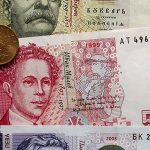The euro edged higher against the US dollar on Tuesday, following the release of mixed economic data out of the United States, as the Federal Reserve Bank prepares to begin a two-day policy meeting, which will probably not introduce any major changes to banks monthly bond purchases.
EUR/USD reached a session high at 1.3807 at 13:39 GMT, after which consolidation followed at 1.3802, rising 0.11% for the day. Support was likely to be received at October 23rd low, 1.3742, while resistance was to be met at October 28th high, 1.3818.
It became clear that US retail sales in September have been adversely influenced by lesser automobile sales, according to an official report. However, if auto sales were to be excluded from the total sales, the result suggested that US consumers spent more on electronics, in restaurants and on goods, that do not belong to the ”first necessities” category. Total retail sales dipped 0.1% in September compared to a month ago, following the 0.2% gain in August compared to July, while median estimates pointed that sales will remain unchanged in September. Sales at universal stores, restaurants and on-line sales comprised the most consumer expenditures, while the latter have been the major driving force behind nations economic growth during the first six months of this year. However, it seemed that US households have been more cautious in spending during the summer period, as the labor market has lost previously accumulated momentum, while policymakers were engaged in a debate on the debt limit.
At the same time, producer prices in the United States decreased unexpectedly in September, implying that inflationary pressure remained weak ahead of the Federal Open Market Committee (FOMC) meeting. The corresponding index, gauging how much companies in the country spend during their production process, diminished 0.1% in September compared to August, after in August compared to July it advanced 0.3%. Experts had anticipated a 0.2% gain in prices during September. The main influence was caused by the 18% drop in prices of fresh vegetables, usually considered as a volatile component. Core producer price index, which excludes prices of food and energy, climbed 0.1% in September on a monthly basis in consonance with projections, after it remained flat in August. Core PPI rose 0.3% in September 2013 compared to September 2012, or the weakest annual climb rate since October 2009.
A separate report showed that US home prices continued to climb in August, despite that the rate of increase has decelerated. According to data by Standard & Poors in cooperation with Case-Shiller, the index, gauging prices of homes in 20 large cities in the country, rose 12.82% in August 2013 compared to August 2012, which outstripped preliminary estimates of a 12.40% rise. Julys result has been revised down to a 12.31% increase from 12.39% increase previously. Seasonally adjusted data pointed that the index rose 0.9%. In Las Vegas house prices registered the most significant climb in August, 2.9%, or the strongest since 2004. In Detroit and Los Angeles prices gained 2%. All in all, the most recent rate of increase slowed down in comparison with that during the first moths of 2013.
Meanwhile, market players remained wary before Federal Reserve Bank policymakers meet today. Experts project that bank’s officials will abstain from trimming the monthly pace of the monetary stimulus this month and wait until March 18th-19th. According to projections the quantitative easing may be pared to 70 billion USD per month from the current 85 billion USD per month.
Elsewhere, the euro was higher against the sterling, as EUR/GBP cross added 0.43% on a daily basis to trade at 0.8581. EUR/JPY pair was also gaining, up 0.32% to trade at 135.14.





